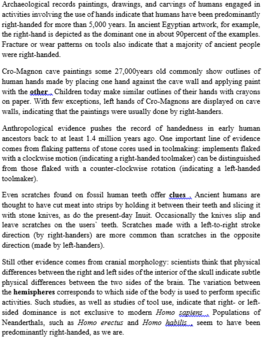Read the following passage and mark the letter A, B, C, or D on your answer sheet to indicate the correct answer to each of the questions from 35 to 42.
It may seem as if the art of music by its nature would not lend itself to the exploration and expression of reality characteristic of Romanticism, but that is not so. True, music does not tell stories or paint pictures, but it stirs feelings and evokes moods, through both of which various kinds of reality can be suggested or expressed. It was in the rationalist 18"1 century that musicians rather mechanically attempted to reproduce stories and subjects in sound. These literal renderings naturally tailed, and the Romanticists profited from the error. Their discovery of new realms of experience proved communicable in the first place because they were in touch with the spirit of renovation, particularly through poetry. What Goethe meant to Beethoven and Berlioz and what Gennan folk tales and contemporary lyricists meant to Weber, Schumann, and Schubert are familiar to all who are acquainted with the music of these men.
There is, of course, no way to demonstrate that Beethoven’s Egrnont music or, indeed, its overture alone corresponds to Goethe’s drama and thereby enlarges the hearer’s consciousness of it; but it cannot be an accident or an aberration that the greatest composers of the period employed the resources of their art for the creation of works expressly related to such lyrical and dramatic subjects. Similarly, the love of nature stirred Beethoven, Weber, and Berlioz, and here too the correspondence is felt and persuades the fit listener that his own experience is being expanded. The words of-the creators themselves record this new comprehensiveness. Beethoven referred to his activity of mingled contemplation and composition as dichten, making a poem; and Berlioz tells in his Memoires of the impetus given to his genius by the music of Beethoven and Weber, by the poetry of Goethe and Shakespeare, and not least by the spectacle of nature. Nor did the public that ultimately understood their works gainsay their claims.
It must be added that the Romantic musicians including Chopin, Mendelssohn, Glinka, and Liszt-had at their disposal greatly improved instruments. The beginning of the 19th century produced the modem piano, of greater range and dynamics than theretfore, and made all wind instruments more exact and powerful by the use of keys and valves. The modem full orchestra was the result. Berlioz, whose classic treatise on instrumentation and orchestration helped to give it definitive form, was also the first to exploit its resources to the full, in the Symphonic fantastique of 1830. This work, besides its technical significance just mentioned, can also be regarded as uniting the characteristics of Romanticism in music, it is both lyrical and dramatic, and, although it makes use of a “story,” that use is not to describe the scenes but to connect them; its slow movement is a “nature poem” in the Beethovenian manner; the second, fourth, and fifth movements include “realistic” detail of the most vivid kind; and the opening one is an introspective reverie.
The word “error” in paragraph 1 refers to _________.
A. the feelings and moods of the Romanticist musicians
B. the exploration and expression of reality of Romanticism
C. the works of the Romanticist musicians in the 18th century
D. musicians’mechanica! reproduction of stories and subjects





Đáp án D